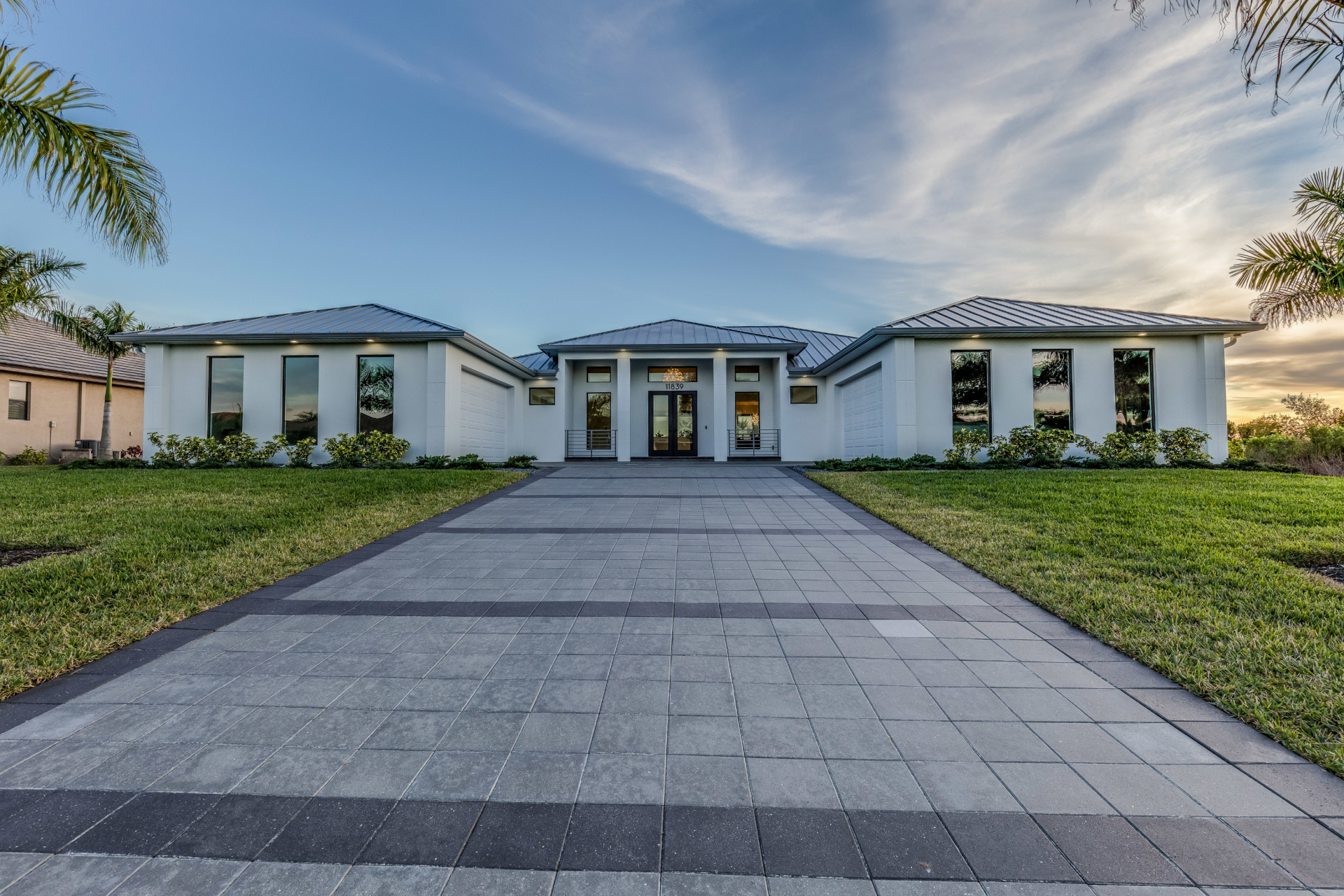Pandemic Home Remodeling is Booming: Here's What Your Neighbors Are Doing
Didier Malagies • August 10, 2020
Pandemic Home Remodeling is Booming: Here's What Your Neighbors Are Doing
Pandemic Home Remodeling Is Booming: Here’s What Your Neighbors Are Doing
CNBC
Written by: Diana Olick
There is a lot of activity in Justin Sullivan’s backyard, as workers hammer out his new deck, and jackhammers pound through the basement.
Concrete for the new pool has already been poured. The Sullivans had planned a renovation before the pandemic hit, but then suddenly it became a much bigger project.
“The pool, the home gym, the sauna — those are things that when you’re not able to go out, your house is an enjoyable space where you can live bunker-style and still be active, still feel comfortable, and still enjoy,” said Sullivan. “The kids will have spaces to make sure they can work from home, and when it gets really hot in the summertime, they’ll have a place where they can cool off.”
The Sullivans are far from alone in their desire to create a retreat, even if that retreat is in their own basement. Houzz, an online home remodeling platform, reported a 58% annual increase in project leads for home professionals in June.
Those working on outdoor spaces saw the biggest increase in demand, with searches for pool and spa professionals three times what they were a year ago. Not far behind, landscape contractors, deck and patio professionals all saw more than double the demand.
Pool demand is so strong that even Wall Street investors are taking note. Poolcorp, an international distributor of swimming pool supplies, parts and outdoor living products, hit an intraday all-time high this week and is up over 54% year to date. The stock is on pace for its best year since 2003.
Much like real estate agents, remodeling professionals are now adapting to a new world of social and professional distancing.
“Over the past year we’ve made many significant additions and improvements to how our platform helps homeowners find and connect with the right professional for their project — enabling people to directly schedule video meetings with pros through Houzz Pro is just one example — and we’re really seeing the impact of those investments in the number and quality of connections we’re making,” said Liza Hausman, vice president of industry marketing at Houzz.
Kitchen and bath have always been popular remodeling choices, but even those saw a 40% jump in demand in June compared with a year ago. More people are cooking and eating at home, and kitchens are now even more the center of family life.
Home extensions and additions jumped 52%, and security and privacy also saw much greater demand with interest in fence installation and repairs up 166%.
Homeowners are likely getting extra incentive from the record high amount of home equity they now have. Home prices continue to gain, despite the economic downturn, as demand for housing soars.
Just over 15 million residential properties were considered equity-rich in the second quarter, meaning mortgages on those properties was 50% or less than the value of the home, according to ATTOM Data Solutions. That is 27.5% of all mortgaged homes in the U.S., up from 26.5% in the first quarter.
“Homeowners saw their equity rise far and wide throughout the United States during the second quarter of this year in yet another sign of the housing market punching back against the Coronavirus pandemic,” said Todd Teta, chief product officer with ATTOM. “More property owners rose into equity-rich territory and escaped the seriously underwater lane, putting more money into the average household.”
Justin Sullivan, who is also a contractor, says he is seeing more people use their home equity to fund these projects.
“We’re also hearing that money that folks are saving from not going out to restaurants, not eating out, not going on vacations, those things are being saved and they’re deciding to add that value back into their homes as an investment,” said Sullivan. “They have more confidence in their homes as investments.”
Sheltering at home clearly influenced demand, as more than three-quarters of all U.S. homeowners said they had done some type of home improvement project during the pandemic, according to a recent survey by Porch.com, another remodeling platform.
More than three-quarters also said they plan to take on a new project in the next 12 months. The top motivator was, “finally having the time,” according to the report. Next was adding value to the home and, finally, making the home “feel more cozy.”
While homeowners may continue to do more projects throughout the fall, some experts predict spending will fall. Harvard’s Joint Center for Housing predicts annual declines in renovation and repair spending of 0.4% by the second quarter of 2021.
“The remodeling market was buoyed through the early months of the pandemic as owners spent a considerable amount of time at home and realized the need to update or reconfigure indoor and outdoor spaces for work, school, play, exercise, and more,” said Chris Herbert, managing director of the Joint Center for Housing Studies.
“However, sharp declines in home sales and project permitting activity this spring, as well as record unemployment, suggest many homeowners will likely scale back plans for major renovations this year and next.”
Start Your Loan
with DDA todayYour local Mortgage Broker
Mortgage Broker Largo See our Reviews
Looking for more details? Listen to our extended podcast!
Check out our other helpful videos to learn more about credit and residential mortgages.

✅ Why mortgage rates can rise even when the Fed cuts rates Mortgage rates don’t move directly with the Fed Funds Rate. Instead, they are primarily driven by the 10-year Treasury yield and investor expectations about inflation, recession risk, and future Fed policy. Here are the main reasons this disconnect happens: 1. Markets expected the rate cut already If investors already priced in the Fed’s cut weeks or months beforehand, then the cut itself is old news. When the announcement hits, mortgage rates may not fall—and often rise if the Fed hints at fewer future cuts. 2. Fed cuts can signal economic trouble Sometimes the Fed cuts because the economy is weakening. That can cause: Investors to worry about higher future inflation, or A “risk-off” move where money leaves bonds Both of these drive the 10-year yield UP, which pushes mortgage rates UP even though the Fed cut. 3. Bond investors wanted a bigger cut If markets expect a 0.50% cut but the Fed only delivers 0.25%, that’s seen as “too tight.” Result: 10-year yield jumps Mortgage rates move higher 4. Fed messaging (“forward guidance”) matters more than the cut Example: The Fed cuts today, but says: “We may need to slow or pause future cuts.” That single sentence can raise mortgage rates, even though short-term rates just went lower. 5. Inflation surprises after the cut If new inflation data comes in hot after a Fed cut, the bond market panics → yields go up → mortgage rates go up. Quick summary Fed Cuts Rates Mortgage Rates Move ✔ Expected or priced in Can rise or stay flat ✔ Fed hints at fewer future cuts Often rise ✔ Inflation remains sticky Rise ✔ Economy looks unstable Rise ❗ Only when 10-year yield falls Mortgage rates fall tune in and learn https://www.ddamortgage.com/blog didier malagies nmls#212566 dda mortgage nmls#324329

New conforming loan limits increase to $832,750, which is great considering we have had price decreases on homes this year. So if you put down 3% the purchase price would be $858,051, and 5% down would be $876,578. Why would that matter? Well, you go above, and you are in Jumbo territory, where you have to put 20% down vs the 3% or 5% down. So, really great news that there is an increase, and when rates do come down, there will be all the homeowners who have the low interest rates, probably make a move to either downsize or upsize on their home, which will create activity and an increase in home prices. So overall, exciting to see the loan amounts increase to help offset the higher home prices tune in and learn https://www.ddamortgage.com/blog didier malagies nmls#212566 dda mortgage nmls#324329



